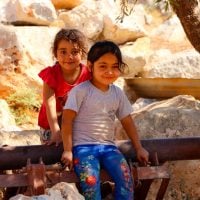Deadline: 22-Jun-23
The United States Agency for International Development (USAID) is seeking applications for a Cooperative Agreement from qualified entities to implement the Kuteteza Health/ Malawi Project.
The purpose of the Kuteteza Health project is to expand access to high quality biomedical interventions that will avert new HIV infections among young boys and men and their respective partners, and support HIV risk reduction activities at the community level. USAID intends to support the Malawi Ministry of Health and the private health sector in the delivery of high quality safe medical male circumcisions.
The Kuteteza project will provide service delivery and technical support for site-level and abovesite interventions including technical leadership, service delivery, in-service training, quality management, policy and guidelines revision, domestic resource mobilization, communications, and social mobilization, monitoring and evaluation for accelerated scale up of voluntary medical male circumcision delivered in combination with other HIV prevention interventions. Communities will be engaged and empowered through routine advocacy, demand creation and social mobilization for male circumcision.
The goal of the Kuteteza Health is to reach and maintain epidemic control through prevention of new HIV infections by targeting men in high burden districts. Malawi is near HIV epidemic control, but there are geographical pockets and sub populations that are disproportionately affected and drive the epidemic. The Kuteteza Health will tailor interventions to high-risk men and boys by implementing biomedical, structural, and behavioral interventions and make use of social and behavior change (SBC) to promote the uptake of and synergies across the intervention components. The Kuteteza Health will prioritize districts and populations shown by epidemiological data to contribute most significantly to the national epidemic and as informed by PEPFAR. Selected districts are prioritized based on the following criteria, which will also be used for any proposed expansion to new districts:
- HIV prevalence above the national average.
- Presence of large sub-populations at elevated risk of HIV acquisition or transmission.
- Opportunity to connect with broader USAID programs; and
- Potential to build on past PEPFAR prevention investments.
Strategic Objective
- The strategic objective of the Kuteteza Health project is to increase the uptake of HIV prevention interventions by targeting districts and populations that contribute to high HIV incidence.
- Within each focus district, this project will analyze available data, such as MPHIA 2020 to identify and prioritize populations at greatest risk of HIV. Typically, these populations will include uncircumcised men 10-49 years, and high-risk individuals for condom programming such as migrant workers, persons living or working along major highways and in informal settlements, discordant couples, and KPs, and their partners. This activity will tailor interventions to achieve “saturation” coverage for VMMC of males 15-49 within the focus districts.
- The Kuteteza project will strengthen linkages to other community interventions such as key population activities and orphans and vulnerable children’s programs. Local communities will be involved in the planning, implementation, and evaluation of planned activities. This project will also strengthen the capacity of local structures to lead and sustain more effective, locally tailored interventions. The ultimate objective is for communities to recognize the importance of HIV prevention beyond the end of the project, to assume ownership of prevention and to scale up responses adapted to their own unique situations.
Funding Information
- Estimated Total Program Funding: $45,000,000
- Award Ceiling: $45,000,000
- Award Floor: $45,000,000
- Subject to funding availability and at the discretion of the Agency, USAID intends to provide funding not exceeding the amounts listed above over a 5 (five) year period.
Geographic Focus: This project will implement VMMC with a specific geographic focus, based on PEPFAR geographic priorities, other programming (PEPFAR and non-PEPFAR) investments, gaps in services and the burden of HIV disease. USAID may require the applicant to shift the geographic focus at the time of award or subsequently during the life of the program to better coincide with PEPFAR geographic priorities, shifts in the HIV epidemic, and/or gaps in coverage.
Cross Cutting Principles
- Sustainability
- Gender integration
- Environmental Compliance and Management
- Private Sector Engagement
Eligibility Criteria
- Eligibility for this NOFO is restricted to local (Malawian) and Regional (Southern African Development Community – SADC) organizations. Applications from organizations that have not previously received financial assistance from USAID are welcome if the Applicant determines that it has necessary capacity to implement activities of the magnitude such as this one.
- Applicants MUST meet the following criteria that qualifies what a local or regional organization as defined by the President’s Emergency Plan for AIDS Relief (PEPFAR).
- USAID/PEPFAR defines a “local or regional entity” as an individual, a sole Proprietorship, or an entity that:
- Is incorporated or legally organized under the laws of the country or region and have its principal place of business in the country or region served by the PEPFAR program with which the entity is or may become involved (in this case Malawi or SADC).
- It is 75% beneficially owned by at the time of the application by individuals who are citizens or lawfully admitted permanent residents of that same country or region.
- At least 75% of the entity’s staff (senior, mid-level, support) at the time of the application must be citizens or lawfully admitted permanent residents of that same country or region and
- Where an entity has a Board of Directors, at least 51% of the members of the Board must also be citizens or lawfully admitted permanent residents of the country or region.
For more information, visit Grants.gov.









































